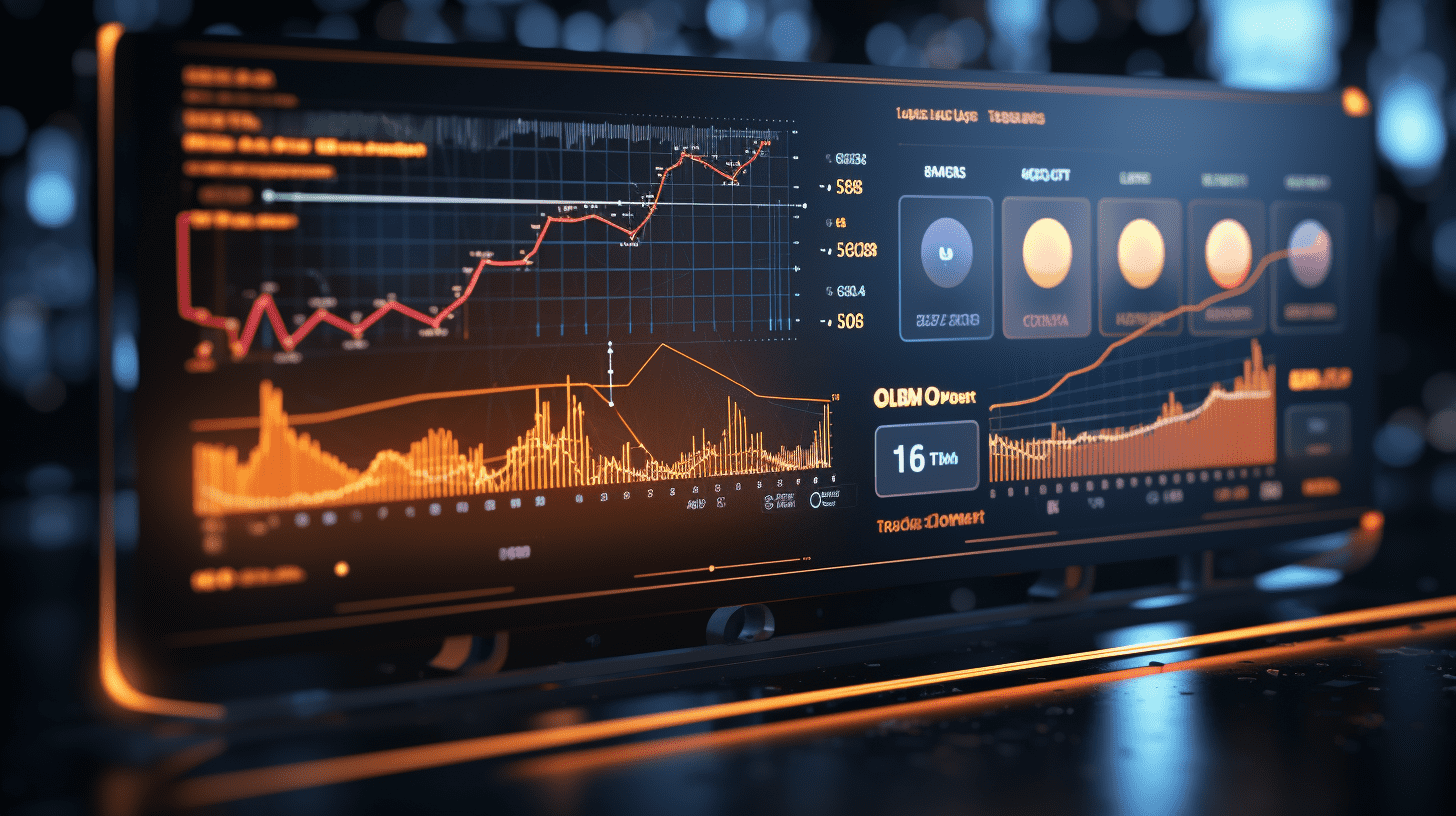After the inflation data brings good news, Trump once again roars at the Federal Reserve: There is no inflation in the United States, please cut interest rates as soon as possible.
Trump pressures Federal Reserve Chairman Jerome Powell to lower interest rates, citing lower than expected inflation reports.
After returning to the White House to start his second term as President of the United States, Donald Trump quoted the latest and unexpectedly weaker-than-expected CPI inflation report on social media, once again pressuring Federal Reserve Chairman Jerome Powell to quickly follow the European Central Bank in lowering interest rates. Since Trump was re-elected as President of the United States, he has repeatedly posted on his own social media platform Truth Social calling for the Fed to cut rates, and has emphasized multiple times that the United States "has no inflation."
The April inflation data released on Tuesday showed that overall CPI and core CPI only rose by 0.2% month-on-month in April, below market expectations. The price increases of most goods affected by tariffs were lower than expected, and the unexpectedly weak inflation of service types also affected these numbers. However, Wall Street analysts collectively expect that the significant price increases driven by Trump's tariff policy will become more apparent in the coming months, potentially prompting Fed FOMC officials to maintain a wait-and-see position on monetary policy in the long term rather than choosing an immediate rate cut.
"No inflation, gasoline, energy, groceries, and almost all other commodity prices are falling!!!" Trump wrote on his social media platform Truth Social. "The Fed must cut rates, just like Europe and China have done. What's wrong with 'always-late Powell'?"
Trump added that the Fed's monetary policy is "not fair for the United States preparing to embark on a new round of prosperity." "Just let everything happen, that would be a wonderful thing!" he continued.
Trump's latest call for the Fed to cut rates on social media came after the release of a U.S. inflation report on Tuesday, which showed that the U.S. Consumer Price Index had been below expectations for three consecutive months. However, the overall and core CPI numbers for April compared to March showed a significant increase.
The prices of goods that were expected to be most affected by tariffs unexpectedly rose less than the level of concern by economists, while the unexpectedly weak inflation in service categories such as plane tickets, hotels, and entertainment may be a significant sign of weakening demand for non-essential items, and also contributed to the overall inflation data being lower than expected.
Fed rate cut expectations cool down! Goldman Sachs' first rate cut bet is significantly delayed until December
Wall Street analysts generally expect that in the coming months, the price increase trend driven by tariff policies will become more apparent, leading them to believe that this will cause the Fed to hesitate in cutting rates. Based on the latest rate cut pricing in the interest rate futures market, traders are currently betting that the Fed will hold steady at the June and July FOMC monetary policy meetings, then announce rate cuts in September and December, with each cut being 25 basis points.
It is worth noting that as Fed officials continue to signal that they will maintain current interest rates, and with the U.S. and China, the world's two largest economies, reaching a significant trade agreement and agreeing to significantly reduce tariffs on each other, expectations of a "soft landing" for the U.S. economy have quickly warmed up, leading to a significant cooldown in rate cut bets at Wall Street financial institutions such as Goldman Sachs.
It is understood that the team of economists from Goldman Sachs now expects the Fed to start three rate cuts from December rather than their previous bet on starting them in July; economists from Citigroup have pushed back their next rate cut expectation from June to July; and economists from another financial institution, Barclays, predict that the Fed will only implement one rate cut in 2025, followed by three 25 basis points cuts next year. Previously, economists from Barclays had expected two 25 basis point rate cuts this year, in July and September.
Undoubtedly, Trump is trying to downplay the price increases and shortages caused by his tariff policy. The U.S. government led by Trump has imposed 10% global tariffs on almost all countries globally, as well as up to 145% tariffs on one of the largest trading partners, China, while threatening additional taxes on key industries or imminent taxation - these tariff measures have thoroughly disrupted the market and sparked concerns among traders and investors about rising costs for U.S. consumers and economic slowdown.
The latest positive news for the U.S. economy and consumer costs is undoubtedly that after high-level Sino-American trade talks in Geneva, Switzerland, a positive consensus was reached, announcing a significant reduction in bilateral tariff levels.
Before the U.S. stock market opened on Monday, the Chinese Ministry of Commerce released a joint statement on the Sino-American talks in Geneva, announcing that the United States will modify the price-based tariffs on Chinese goods (including goods from the Hong Kong Special Administrative Region and the Macau Special Administrative Region) imposed by Executive Order No. 14257 issued on April 2, 2025, where 24% tariffs will be suspended within the initial 90 days, while the remaining 10% tariffs will still be in place under the provisions of this order; and (2) Cancelling the additional tariffs imposed on these goods in accordance with Executive Orders No. 14259 issued on April 8, 2025, and No. 14266 issued on April 9, 2025.
According to calculations by multiple financial institutions, the latest trade consensus means that for the vast majority of goods, the additional tariffs imposed by the U.S. on China this year have been significantly reduced from 145% to 30% (fentanyl 20% + 10% equivalent tariff). If certain tariffs imposed by Trump in his first term (2018) are included, the actual tax rate imposed by the U.S. on China is between 40% and 50%.
The next few months of inflation data are crucial
In the view of Wall Street analysts, the inflation data for April is far from the "final inflation conclusion." Many imported goods placed on U.S. shelves last month arrived in the U.S. before the new tariffs took effect. Some businesses are also absorbing the impact of tariffs themselves to avoid a demand downturn at a time when consumers are already feeling concerned about the economy and spending.
Categories with significant price changes in April - the largest decrease in egg prices and a significant increase in the cost of audio equipment.
"Our forecasts expect tariffs to cause a surge in U.S. commodity prices in June and July," wrote Michael Hansen, an economist from J.P. Morgan, in a commentary after the release of the CPI inflation report. "Economic analysts and Fed officials are all watching the specific extent of price pressure."Ian Pollick, global head of fixed income and foreign exchange strategy at CIBC, said, "Looking solely at the inflation report for April, it does show a clear improvement for the Fed. However, the key issue is that the transmission of tariffs may be much slower than during Trump's first term. For the bond market, this means that the stability of core commodity prices in the next two economic data cycles continues to be a concern for investors."The Chief Global Strategist of J.P. Morgan Asset Management, David Kelly, pointed out that not only the tariff policy but also the fiscal stimulus measures being pushed by the Trump administration will affect the direction of CPI. Tariffs will stimulate inflation in the short term, and by 2026, inflation will further rise due to a new round of stimulus measures. Kelly expects the yield of the 10-year U.S. Treasury bond to fluctuate between 4.5% and 5%.
The positive news is that grocery prices in the United States have seen their largest decline since 2020, which is undoubtedly good news for the increasingly tight budgets of middle and low-income groups in the U.S. The decline is mainly driven by the largest drop in egg prices in forty years, as previously a surge in avian flu cases had pushed egg prices to historical highs. Prices of other important staples such as bacon, chicken, and rice have also decreased.
Trump often refers to the significant drops in gasoline and other commodity prices to downplay the risk of inflation, even though he occasionally acknowledges that tariffs may force consumers to reduce demand for certain products.
The so-called "reciprocal tariffs" imposed by Trump on approximately 50 countries and the European Union are currently suspended at 10% until July. There is a possibility that "reciprocal tariffs" targeting certain countries will be announced to be increased in July. In early April, Trump briefly announced higher tariffs which caused a collective plunge in the U.S. stock, bond, and currency markets, but then under market pressure, he temporarily suspended the implementation of some aggressive reciprocal tariffs and collectively lowered them to 10%, giving other countries 90 days to negotiate agreements with the U.S. government.
Related Articles

Former JP Morgan strategist criticizes cryptocurrencies: "Rat poison"! Comparable to a pyramid scheme.

Director Zheng Zhajie of the National Development and Reform Commission presided over a symposium to listen to the opinions and suggestions of private enterprises.

A new Wall Street saying is born: "Buy in May and enjoy the profits"
Former JP Morgan strategist criticizes cryptocurrencies: "Rat poison"! Comparable to a pyramid scheme.

Director Zheng Zhajie of the National Development and Reform Commission presided over a symposium to listen to the opinions and suggestions of private enterprises.

A new Wall Street saying is born: "Buy in May and enjoy the profits"

RECOMMEND

The central bank: the cumulative increase in social financing scale in the first 4 months reached 16.34 trillion yuan.
14/05/2025

Ministry of Science and Technology and six other departments: Accelerate the construction of a science and technology financial system to provide strong support for high-level scientific and technological self-reliance.
14/05/2025

After the inflation data brings good news, Trump once again roars at the Federal Reserve: There is no inflation in the United States, please cut interest rates as soon as possible.
14/05/2025


